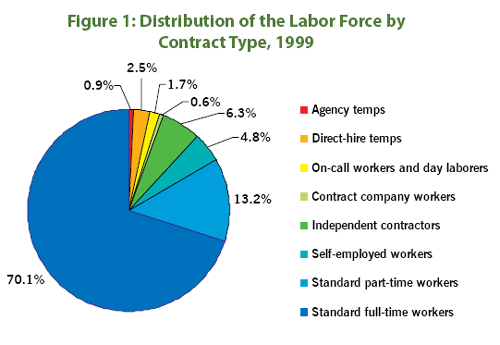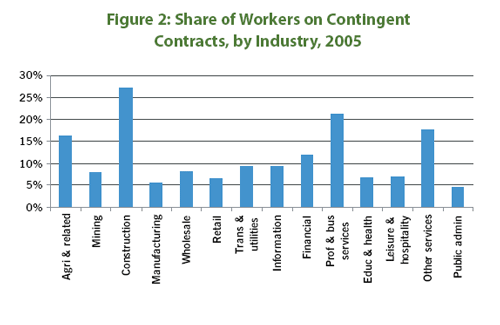The Rise of the Gig Economy
http://truth-out.org/news/item/23592-the-rise-of-the-gig-economy

Growing numbers of Americans no longer hold a regular “job” with a long-term connection to a particular business. Instead, they work “gigs” where they are employed on a particular task or for a defined time, with little more connection to their employer than a consumer has with a particular brand of chips. Borrowed from the music industry, the word “gig” has been applied to all sorts of flexible employment (otherwise referred to as “contingent labor,” “temp labor,” or the “precariat”). Some have praised the rise of the gig economy for freeing workers from the grip of employers’ “internal labor markets,” where career advancement is tied to a particular business instead of competitive bidding between employers. Rather than being driven by worker preferences, however, the rise of the gig economy comes from employers’ drive to lower costs, especially during business downturns. Gig workers experience greater insecurity than workers in traditional jobs and suffer from lack of access to established systems of social insurance.
How Big Is the Gig Economy?
Special surveys by the Bureau of Labor Statistics in 1995, 2001, and 2005, and by the General Accounting Office in 1999, yielded widely varying estimates of the scale of the gig economy. The GAO estimated that as many as 30% of workers were on some type of contingent labor contract, including some categories of workers (self-employed and part-time workers) who are not counted as contingent workers by the BLS. Using the narrower BLS definition, 12% of workers were on contingent contracts in 1999 (similar to the number estimated from more recent surveys). (see Figure 1).

There Are Many Types of Contingent Workers
Contingent workers are employed throughout the economy, in all industries and in virtually all occupations. Using the BLS definition, which includes independent contractors, temporary workers, on-call workers, and workers provided by contract firms, contingent workers made up over 11% of the labor force in 2005. Some contingent workers do low-wage work in agriculture, construction, manufacturing, retail trade, and services; others are employed as highly paid financial analysts, lawyers, accountants, and physicians (see Figue 2).



